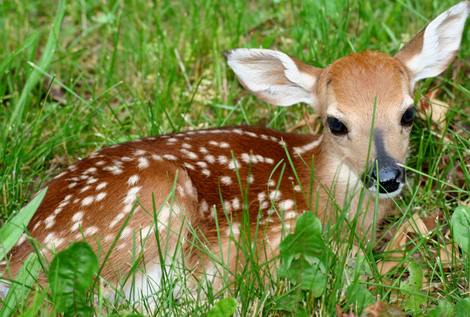Past articles on this site have discussed buck to doe ratio more than once, but today we are going to talk about how buck to doe ratios impact subsequent fawning dates and recruitment of fawns into your white-tailed deer herd. Many factors can impact rutting or breeding activity, but most of the breeding takes place over a relatively short time in healthy deer herds.
Timing, of course, depends on latitude, local conditions, and a host of other factors, but year-in and year-out most of the rut takes place more or less over the same time each year in a given area. Though often overlooked, buck to doe ratio should be an important deer management consideration on your ranch.

In the previous paragraph, a “healthy” deer herd was mentioned and it was stated “most” of the breeding takes place at the same time, but what exactly does that mean? Well, a healthy deer herd would be one that is at carrying capacity for the habitat, has a buck to doe ratio of no fewer than 1 buck per 3 does, and all animals are in good body condition. With all of these parameters in place, it would be expected that majority of the breeding would happen over the course of a 10-day period, or even less.
Ratios and the Rut
Why? Well as deer have evolved, the timing of deer breeding/rutting as become more constricted. A properly timed rut results in a high fawn survival rate and ultimately in the survival of the species. In some areas at northern latitudes, climate conditions can be extreme — so deer have adapted to a narrow fawning window.
If fawns are born too early, it can still be too cold. If too late, they may not have enough time to build up the needed body mass and energy needed to get through the winter. At southern latitudes, temperature is not as much of a factor, but it still plays a role for fawns born too early or too late.
Sex Ratios and Early Rut, Late Rut
So without getting into all the factors that can impact fawning dates right now, let’s talk about buck to doe ratios and how that effects the fawning season. White-tailed does come into estrus for only a day or two — usually in high numbers as if someone hit a switch. If they are not bred within that time, they will come back into estrus 28 days later. If there are not enough bucks to service all the does in an area, those does will not get bred until about a month later. If they aren’t bred then, it’s another 28 days. This explains what some people refer to as the “late rut.”
At this point you may be asking yourself, “What’s the problem?” Well, it’s true that deer populations with a high number of does per buck still have high breeding success (percent of does bred), but those deer herds don’t necessarily have good recruitment of fawns into the adult population. One reason can simply be because of habitat conditions.
Recommended Buck to Doe Ratio
If it turns out to be a dry spring, fawns that are born just one month later than expected may suffer some serious consequences, specifically regarding the available food sources for a doe to maintain herself, produce milk and raise fawns. If that timing ends up being 2 months later, then that may be well into the summer season and the odds of a doe raising those same fawns is much closer to zero.
In short, manage lands for a proper buck to doe ratio and it will help increase both breeding and fawning success. It’s recommended that there be no more than 3 does for every 1 buck, with the goal being 2 does per buck in most free-ranging deer herds. In the future, we will discuss some of the other factors that impact fawn survival and recruitment. Deer population parameters are closely intertwined, and the buck to doe ratio of your herd is much more than just a number.